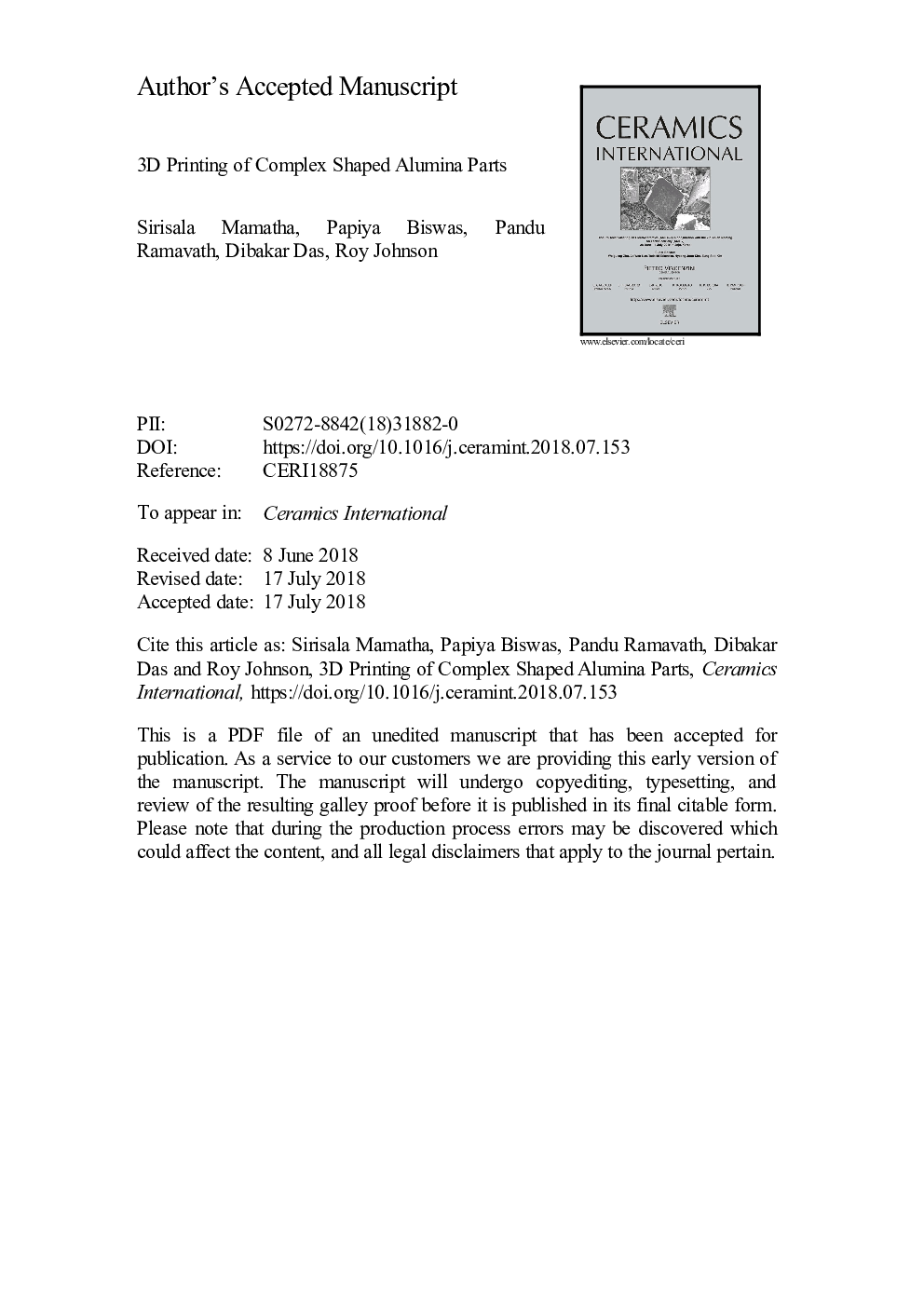| Article ID | Journal | Published Year | Pages | File Type |
|---|---|---|---|---|
| 10155386 | Ceramics International | 2018 | 20 Pages |
Abstract
Alpha-alumina powder was mixed with methyl cellulose as a binder with concentration as low as 0.25% by weight in an aquoes medium and kneaded in a high shear mixer to obtain a printable paste. The paste was subjected to rheological measurements and exhibited a shear rate exponent of 0.54 signifying the shear thinning behavior. The paste was used for printing parts with various shapes according to CAD model by employing a ram type 3D printer. Printed parts were dried and the green density was determined. Further, the parts were also subjected to X-ray radiography in order to evaluate the possible occurrence of printing defects. The samples were sintered under pressureless condition at 1650â¯Â°C in a muffle furnace and Hot Isostsically Pressed (HIP) at 1350â¯Â°C and a pressure of 1650â¯bar using a vacuum encapsulated SS CAN. Hot Isostatic pressing resulted in a higher density of 3.94â¯g/cc in comparison to 3.88â¯g/cc obtained under pressureless conditions and also shown superior mechanical properties. HIPing of 3D printed samples not only resulted in possible healing of printing defects as reavealed by X-ray radiography but also enhanced the diffusion at low temperature of 1350â¯Â°C leading to finer grain sizes as complemented by the microstructure.
Related Topics
Physical Sciences and Engineering
Materials Science
Ceramics and Composites
Authors
Sirisala Mamatha, Papiya Biswas, Pandu Ramavath, Dibakar Das, Roy Johnson,
